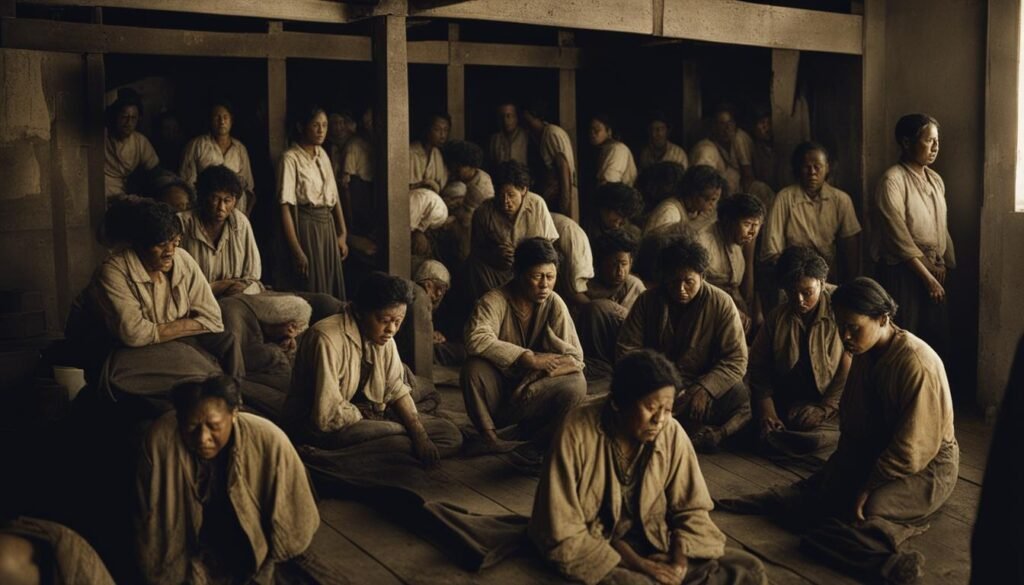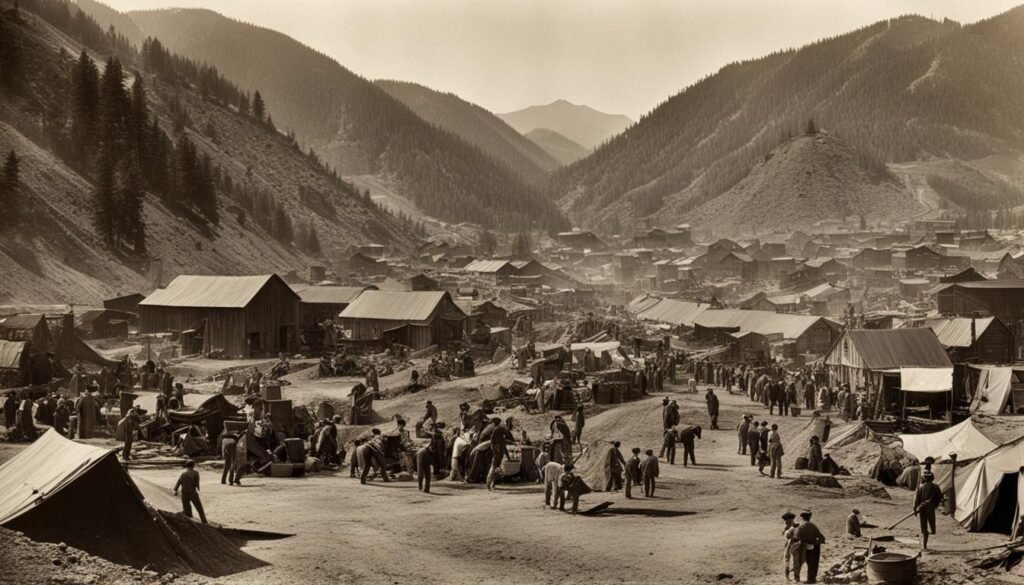Welcome to my blog post, where I will be discussing the fascinating history and significance of Angel Island in the context of US immigration. As one of the main immigration facilities on the West Coast from 1910 to 1940, Angel Island holds a crucial place in American history. Unlike Ellis Island, which primarily processed European immigrants, Angel Island played a significant role in the immigration of Asian individuals, particularly Chinese and Japanese.
The discriminatory practices and harsh conditions experienced by immigrants at Angel Island reflect the challenges faced by those seeking a better life in America. The establishment and operation of Angel Island were heavily influenced by the Chinese Exclusion Act of 1882, which restricted immigration based on nationality and race. This law, driven by anti-Chinese sentiment in the West Coast, shaped the immigration policies and procedures at Angel Island.
Throughout this blog post, we will delve into the history of Angel Island, explore the discrimination and detention faced by immigrants, and examine its impact and legacy on US immigration policy. Join me as we dive into the complex and significant story of Angel Island in US history.
Key Takeaways:
- Angel Island was the main immigration facility on the West Coast from 1910 to 1940, processing mainly Asian immigrants.
- The Chinese Exclusion Act of 1882 heavily influenced the immigration policies and procedures at Angel Island.
- Discrimination and harsh conditions were prevalent at Angel Island, reflecting the challenges faced by immigrants seeking entry into the United States.
- The history and legacy of Angel Island highlight the complexities of US immigration policy and its impact on immigrant communities.
- Angel Island holds a crucial place in US history and offers a unique perspective on the immigrant experience, distinct from Ellis Island on the East Coast.
The History of Angel Island Immigration Station
The Angel Island Immigration Station has a rich history that traces back to the 1800s. Initially serving as a military reserve and later as a quarantine station, Angel Island became an immigration facility in 1910. Its establishment aimed to address the overcrowding issues faced by the immigration facility in San Francisco.
Angel Island Immigration Station operated until 1940 when a devastating fire destroyed its main administration building. During its existence, the station processed over one million immigrants, making it a significant entry point for those seeking a new life in the United States.
With its peak years falling between 1910 and 1940, Angel Island processed a substantial number of Asian immigrants, including 250,000 Chinese and 150,000 Japanese individuals. However, it’s important to note that unlike Ellis Island, which primarily dealt with European immigrants, Angel Island implemented discriminatory policies specifically targeting Asian immigrants.
Angel Island’s history as an immigration station embodies the challenges and struggles faced by those seeking to enter the United States during the early 20th century. The implementation of discriminatory policies against Asian immigrants reflects the broader historical context and prevailing attitudes of the time.
Discrimination and Detention at Angel Island
Immigrants detained at Angel Island experienced harsh conditions and discrimination. Upon arrival, they were subjected to medical exams and lengthy interrogations conducted by immigration officials known as the Board of Special Inquiry.
The goal of these interrogations was to expose fraudulent claims and determine eligibility for entry into the United States. Detainees were held in confined dormitories, with limited freedoms and strict rules.
The station’s isolation from the mainland prevented communication with immigrants in San Francisco and facilitated control over entry into the country.

Chinese Exclusion Act and Anti-Chinese Sentiment
The discriminatory policies at Angel Island were heavily influenced by the Chinese Exclusion Act of 1882, which marked the first instance of immigration restrictions based on nationality and race in the United States. The passage of this act was driven by widespread anti-Chinese sentiment among the white population on the West Coast.
The Chinese Exclusion Act, along with subsequent laws, specifically targeted Chinese immigrants, effectively limiting their entry into the United States. This legislation played a significant role in the rise of Angel Island as an immigration station, where Chinese immigrants were detained and interrogated as part of the immigration process.
The Chinese Exclusion Act represented a significant shift in U.S. immigration policy, setting a precedent for the treatment of Asian immigrants in the years to come. It reflected a climate of discrimination and prejudice that shaped the experiences of Chinese immigrants and influenced the overall narrative of Asian immigration history.
Despite its discriminatory policies, Angel Island holds a crucial place in understanding the complexities of U.S. immigration policy and the impact it has had on immigrant communities. The story of Chinese immigration to the United States is closely intertwined with the history of Angel Island and the discriminatory practices that unfolded there.
Immigration Process and Interrogations at Angel Island
The immigration process at Angel Island was a rigorous and often daunting experience for the thousands of immigrants who passed through its gates. Immigrants were subjected to thorough interrogations conducted by the Board of Special Inquiry, whose goal was to identify fraudulent claims of exemption from the Chinese Exclusion Act. The interrogations were designed to extract detailed information about an immigrant’s family history, village location, and other aspects of their lives.
Immigrants faced lengthy and exhaustive questioning during the interrogations, which could last for hours or even days. Any inconsistencies in their testimony could lead to prolonged questioning, deportation, or even the risk of deportation for family members connected to the applicant. The conditions of the interrogations and the uncertainty surrounding the outcome made the experience at Angel Island a challenging and anxiety-inducing one for many immigrants.
During the gilded age, the immigration process at Angel Island reflected the prevailing xenophobia and discrimination present in the United States. The Chinese Exclusion Act, which limited Chinese immigration, heavily influenced the procedures and policies at Angel Island. This discriminatory environment created an atmosphere of suspicion and scrutiny for Asian immigrants, making the immigration process even more arduous and complex.
The interrogations at Angel Island were not only meant to ascertain an immigrant’s eligibility for entry into the United States but also served as a tool to deter immigration from China and other Asian countries. The stringent scrutiny and often intrusive questioning contributed to the overall hostile environment that prevailed at Angel Island during this time.

Despite the challenges presented by the interrogations, many immigrants persevered and provided the necessary information, allowing them to gain entry into the United States. The stories of resilience and determination from those who successfully passed through Angel Island’s interrogations serve as a testament to the strength and courage of immigrants during this tumultuous period in American history.
Impact and Legacy of Angel Island
The Angel Island Immigration Station served a significant purpose in enforcing the Chinese Exclusion Act and regulating immigration from Asia. As the main immigration facility on the West Coast during the early 20th century, it played a pivotal role in shaping U.S. immigration policy and influencing the treatment of Asian immigrants.
The impact of Angel Island extends beyond its historical significance. It holds the stories and experiences of the thousands of immigrants who passed through its gates, many of whom faced discrimination and endured harsh conditions. Their struggles and challenges serve as a reminder of the hardships immigrants have faced throughout U.S. history, particularly those from Asian countries.
The legacy of Angel Island is also recognized by Pacific Islander communities who were affected by immigration regulations and procedures at the station. The station’s existence and practices highlight the complexities of U.S. immigration policy and its impact on immigrant communities.
Angel Island in Comparison to Ellis Island
While Ellis Island in New York is often associated with the immigration experience in the United States, Angel Island played a crucial role as the main entry point for immigrants on the West Coast. Unlike Ellis Island, which primarily processed European immigrants, Angel Island processed immigrants from Asia and other regions, making it an important alternative to Ellis Island for those entering the country on the West Coast.
The experiences at both immigration stations differed significantly. While Ellis Island offered a relatively smooth process for European immigrants, Angel Island was known for its discriminatory practices and interrogations, particularly towards Asian immigrants. The strict policies and lengthy interrogations conducted at Angel Island subjected immigrants to challenging and detaining conditions.
The stories and histories of the immigrants who passed through Angel Island offer a unique perspective on the immigrant experience in the United States. It provides a glimpse into the struggles and challenges faced by those who hoped to make a new life in America, specifically on the West Coast. Understanding the differences between Angel Island and Ellis Island allows us to appreciate the complexities of immigration history and its impact on immigrant communities.
Conclusion
Angel Island Immigration Station holds a significant place in the history of immigration to the United States, particularly in relation to Asian immigrants. Its establishment and operation during the early 20th century reflect the discriminatory policies and attitudes prevalent at the time. The interrogations, detainment conditions, and immigration process at Angel Island highlight the challenges faced by immigrants seeking a better life in America.
Understanding the history and legacy of Angel Island is crucial in recognizing the complexities of U.S. immigration policy and the impact it has on immigrant communities. The station’s role in enforcing the Chinese Exclusion Act and regulating immigration from Asia shaped the landscape of immigration policy and the treatment of Asian immigrants. The experiences of the thousands of immigrants who passed through Angel Island serve as a testament to their resilience and determination.
As we reflect on the past, it is important to consider the lessons learned from Angel Island and the ongoing need for fair and inclusive immigration policies. By acknowledging the challenges faced by immigrants and understanding the historical context in which immigration policies were developed, we can work towards creating a more equitable and compassionate immigration system in the United States.
FAQ
What was the purpose of Angel Island?
Angel Island served as the main immigration facility on the West Coast of the United States from 1910 to 1940. Its purpose was to enforce the Chinese Exclusion Act and regulate immigration from Asia.
When did Angel Island close?
Angel Island Immigration Station closed in 1940 after a fire destroyed the main administration building.
What were the conditions like at Angel Island?
Immigrants detained at Angel Island experienced harsh conditions. They were held in confined dormitories with limited freedoms and strict rules. The station’s isolated location prevented communication with immigrants in San Francisco.
How did the Chinese Exclusion Act influence immigration procedures at Angel Island?
The Chinese Exclusion Act of 1882 heavily influenced the immigration procedures at Angel Island. It led to the detainment and interrogation of thousands of Asian immigrants, particularly Chinese and Japanese.
What was the immigration process like at Angel Island?
The immigration process at Angel Island involved thorough interrogations conducted by the Board of Special Inquiry. Immigrants had to provide detailed information about their family history and village location. The goal was to identify fraudulent claims of exemption from the Chinese Exclusion Act.
What is the legacy of Angel Island?
Angel Island holds a significant place in the history of immigration to the United States. It reflects the discriminatory policies and attitudes prevalent at the time and serves as a reminder of the challenges faced by immigrants, particularly those from Asian countries.
How does Angel Island compare to Ellis Island?
While Ellis Island in New York is often associated with the immigration experience in the United States, Angel Island played a crucial role as the main entry point for immigrants on the West Coast. It primarily processed immigrants from Asia and other regions, with different experiences and policies than Ellis Island.
What is the significance of Angel Island in US history?
Angel Island’s history is significant in shaping U.S. immigration policy and the treatment of Asian immigrants during the early 20th century. It highlights the complexities of immigration and the impact it has on immigrant communities.







